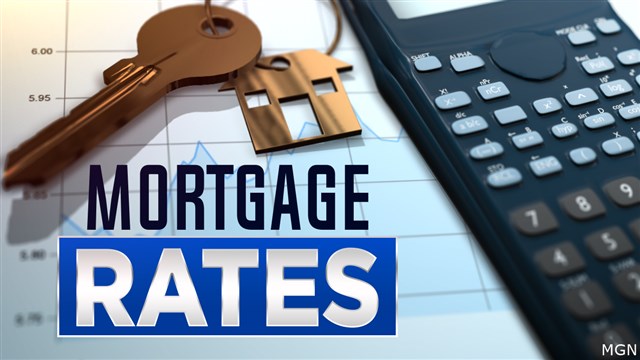Weekend Closure: I-205 NB Foster To I-84
Portland, Oregon (ODOT) – The Oregon Department of Transportation is improving operations and safety on Interstate 205 between Johnson Creek Boulevard and the Glenn Jackson Bridge. Work will include paving the freeway, ramps and intersections; building auxiliary lanes in three locations; installing ODOT Real Time signs; improving the entrance to the multi-use path at Glisan Street; and improving sidewalk curb ramps within the project area.
Upcoming Closures- 7/26/2019
24/7 Weekend Closure of I-205 North August 2 to August 5
All lanes on I-205 north will close between Foster Road (Exit 17) and I-84 interchange for a full weekend starting at 10 p.m. on Friday, August 2 and opening at 5 a.m. on Monday, August 5.
Signs will detour travelers onto 82nd Avenue and 122nd Avenue. Travelers can access the Portland Airport from either route by following the signed detours.
Three on-ramps to I-205 north outside of the work area (between Foster Road and the I-84 interchange) will also close starting at 9 p.m. Friday, August 2 and opening at 5 a.m. on Monday, August 5:
- Sunnyside/Sunnybrook on-ramp.
- Johnson Creek Boulevard on-ramp.
- Glisan Street on-ramp.
DETOUR DIRECTIONS
SE 82nd Avenue to I-205 north & Portland Airport:
- Take the Foster Road Exit 17 off-ramp.
- Turn left onto Foster Road.
- Turn right onto 82nd Avenue.
- For I-205 north, turn right onto U.S. 30 Bypass/Killingsworth Street and follow signs.
- For the Portland Airport, take a left onto Airport Way.
SE 122nd Avenue to I-205 north & Portland Airport:
- Take the Foster Road Exit 17 off-ramp.
- Turn right for Foster Road Eastbound.
- Turn left onto 122nd Avenue.
- Take a left onto Airport Way.
- Follow signs for I-205 north or continue straight for the Portland Airport.
Click here to view the detour map for I-205 closure between Foster Rd (Exit 17) and I-84
Upcoming Traffic Impacts Mid-August (dates not yet available)
Full Nighttime closure of I-205 between Oregon & Washington
I-205 will close in both directions over the Glenn Jackson Bridge for several nights in mid-August from 11:59 p.m. to 5 a.m. Exact dates are not yet
available.
Construction crews will install sign bridges on the south end of the bridge for new ODOT RealTime signs.
I-205 will close to traffic between Portland, OR and Vancouver, WA during the closure. Detour routes will direct travelers in Washington to SR 14 west and
I-5 south, and travelers in Oregon to I-84 west and I-5 north.
All Oregon exits remain open prior to the bridge, including Airport Way. Travelers from Oregon can continue on I-205 to the Portland Airport.
DETOUR DIRECTIONS
I-205 northbound traffic from Oregon to Washington:
- Take Exit 21B for I-84 west/U.S. 30 toward Portland.
- Merge onto I-84 west/U.S. 30.
- Merge onto I-5 north toward Seattle.
- Continue on I-5 into Washington.
- Take Exit 1A toward Camas/SR 14 east.
- Take Exit 6 for I-205 north toward Seattle/Salem and keep right.
I-205 southbound traffic from Washington to Oregon:
- Take Exit 27 toward City Center/SR 14 west.
- Continue on SR 14 west.
- Follow signs for I-5 south toward Portland.
- Merge onto I-5 south.
- Take Exit 301 for I-84 east/U.S. 30 toward The Dalles.
- Merge on I-84 east/U.S. 30.
- If headed south, take Exit 6 toward Salem. If headed north (toward the Portland Airport), take Exit 8 toward Seattle.
Click here to view the detour map for I-205 Glenn Jackson Bridge closure
Frequently asked questions about new auxiliary lanes answered!
When will the new auxiliary be completed and open?
In 2019, the new auxiliary lane on I-205 southbound from I-84 Eastbound to Division Street/Powell Boulevard opened.
Work on the remaining two auxiliary lanes (I-205 northbound auxiliary lanes from Interstate 84 eastbound to the Killingsworth Street exit and from Powell Boulevard to I-84 westbound) will continue throughout 2019. These auxiliary lanes are expected to open in late 2019.
Where do I find traffic impact information?
Every Friday afternoon, traffic impacts for the coming week are posted on this website and on ODOT’s Region 1 Weekly Construction Update. Know before you go: For more detailed information, visit TripCheck.com for 24/7 traffic impacts in the Portland metro area and throughout Oregon. You can also have project updates sent right to your inbox by signing up for project email updates.
Can I merge onto I-205 from the new auxiliary lanes? How do they work?
Yes! Auxiliary lanes are extra lanes constructed between on- and off-ramps that allow drivers more room to safely merge onto the highway, in this case I-205.
Traffic can still access I-205 from the auxiliary lanes (between the exit and entrance ramps) by simply merging onto the main travel lanes. Auxiliary lanes also allow drivers entering the highway to stay in one lane as they travel to the next exit and avoid merging with traffic on the main travel lanes of I-205. This reduces congestion and improves safety by decreasing merging and weaving through lanes.
Please watch the project video to see how auxiliary lanes work.
Why were guardrails removed from I-205 between Powell and Stark? They seemed to be in good working order.
It’s part of the construction project to add auxiliary lanes. Adding them requires more width, and typically we would widen toward the east. In this case we can’t, because TriMet’s MAX tracks run under the freeway through the tunnel near Division Street. Instead, we’re widening the median side — which requires removing guardrails during construction.
More about auxiliary lanes
Improving highway bottlenecks to address safety and reduce congestion
The Federal Highway Administration has found that approximately 40 percent of all congestion nationwide can be attributed to recurring congestion – or “bottlenecks.” In 2009, ODOT started a new approach to deal with recurring localized freeway bottlenecks in the Portland metro area. The Corridor Bottleneck Operations Study identified areas of recurring congestion along five key Portland metro area highways (Interstate 5, Inerstate 84, Interstate 405, I-205 and U.S. 26) and recommended low-cost, highly effective solutions to improve safety and reduce congestion at these locations. In many cases, auxiliary lanes were the recommended solution.
The Corridor Bottleneck Operations Study found areas on I-205 within this project area where auxiliary lanes could improve safety and reduce recurring congestion. An auxiliary lane typically provides a direct connection on the freeway from one interchange ramp to the next. These “entrance-to-exit” lanes reduce the conflicts that cause congestion and crashes, by separating slower movements from the freeway mainline. Diagrams and benefits of the new auxiliary lanes are outlined on the project details page.
For an overview of the study, download the CBOS fact sheet.



